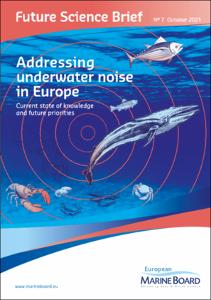| dc.contributor.author | Thomsen, F. | |
| dc.contributor.author | Mendes, S. | |
| dc.contributor.author | Bertucci, F. | |
| dc.contributor.author | Breitzke, M. | |
| dc.contributor.author | Ciappi, E. | |
| dc.contributor.author | Cresci, A. | |
| dc.contributor.author | Debusscher, E. | |
| dc.contributor.author | Ducatel, C. | |
| dc.contributor.author | Folegot, F. | |
| dc.contributor.author | Juretzek, C. | |
| dc.contributor.author | Lam, F-P. | |
| dc.contributor.author | O’Brien, J. | |
| dc.contributor.author | dos Santos, M. E. | |
| dc.contributor.editor | Kellett, P. | |
| dc.contributor.editor | van den Brand, R. | |
| dc.contributor.editor | Alexander, B. | |
| dc.contributor.editor | Muniz Piniella, A. | |
| dc.contributor.editor | Rodriguez Perez, A. | |
| dc.contributor.editor | van Elslander, J. | |
| dc.contributor.editor | Heymans, J. J. | |
| dc.coverage.spatial | European | en_US |
| dc.date.accessioned | 2021-10-25T13:14:12Z | |
| dc.date.available | 2021-10-25T13:14:12Z | |
| dc.date.issued | 2021 | |
| dc.identifier.citation | Thomsen, F., Mendes, S., Bertucci, F., Breitzke, M., Ciappi, E., Cresci, A. Debusschere, E., Ducatel, C., Folegot, F., Juretzek,
C., Lam, F-P., O’Brien, J., dos Santos, M. E. (2021) Addressing underwater noise in Europe: Current state of knowledge
and future priorities.(eds: Kellett, P., van den Brand, R., Alexander, B., Muniz Piniella, A., Rodriguez Perez, A., van Elslander, J.,
Heymans, J. J. ). Ostend, Belgium, European Marine Board, 56pp. (European Marine Board Future Science Brief 7). DOI: 10.5281/zenodo.5534224. | en_US |
| dc.identifier.isbn | 9789464206104 | |
| dc.identifier.uri | https://repository.oceanbestpractices.org/handle/11329/1759 | |
| dc.description.abstract | Anthropogenic underwater noise impacts have become a hot topic for environmental managers and regulators in Europe
and beyond. Sounds from human activity at sea include shipping and other marine craft, construction and installations,
sonar and seismic surveys. This Future Science Brief presents an update on the previous EMB publication on underwater
noise, Position Paper N° 13 on “The effects of anthropogenic sound on marine mammals: A draft research strategy". This
Future Science Brief expands the scope of the discussion beyond marine mammals to fishes and invertebrates, and outlines
key developments that have taken place since the Position Paper’s publication. The main chapters of the document focus
on: the advances in our knowledge on anthropogenic underwater sound in the Ocean; the new knowledge that has been
developed on the effects of noise on marine organisms; and the measures that have been taken to address the issue of
underwater noise.
While significant progress has been made, knowledge gaps still remain. The document therefore presents these
outstanding issues and highlights priority actions for addressing them. This Future Science Brief states that the most
urgent priority actions/questions are to:
1. Develop collaborative international standards applicable to all steps of the risk framework;
2. Conduct comprehensive monitoring combined with spatial ecological modelling of marine species’
dynamic habitat use, movements, behaviour and distribution to establish baselines;
3. Foster comprehensive monitoring and data collection of current soundscapes / ambient noise, including
via joint monitoring programmes in existing and new areas;
4. Shortlist high priority (and biologically relevant) sound sources and perform standardized source
characterization studies;
5. Undertake hearing studies on baleen whales and on selected fish and invertebrate species;
6. Conduct field and modelling studies on changes in acoustic habitats to identify masking risks to
communication in fishes and marine mammals;
7. Conduct further studies on behavioural response of marine mammals and fishes due to exposure to high
intensity impulsive sounds to assess population consequences;
8. Conduct taxa-relevant studies on hearing impairment and physiological stress to address existing
knowledge gaps in invertebrates, fishes and marine mammals;
9. Conduct dedicated studies including multi-species investigations, predator-prey interactions, and
interaction with other food web levels, addressing the question of how noise impacts combine with
other stressors;
10. Develop frameworks and conduct studies to allow population-level assessment of effects from
cumulative impact of noise and other pressures;
11. Conduct dedicated modelling and field studies to improve understanding on effectiveness, safety and
cost-effectiveness of noise mitigation devices, mitigation measures and management options;
12. Develop regional action plans and guidelines for Environmental Impact Assessment and policies; and
13. Initiate international collaborative transdisciplinary projects to develop stakeholder and societal capacity
in understanding and addressing underwater noise. | en_US |
| dc.description.sponsorship | European Marine Board | en_US |
| dc.language.iso | en | en_US |
| dc.publisher | European Marine Board | en_US |
| dc.relation.ispartofseries | European Marine Board Future Science Brief;7 | |
| dc.subject.other | Noise effects | en_US |
| dc.subject.other | Underwater noise | en_US |
| dc.subject.other | Marine mammals | en_US |
| dc.subject.other | Fish | en_US |
| dc.subject.other | Invertebrates | en_US |
| dc.title | Addressing underwater noise in Europe: Current state of knowledge and future priorities. | en_US |
| dc.type | Report | en_US |
| dc.description.status | Published | en_US |
| dc.format.pages | 56pp. | en_US |
| dc.publisher.place | Ostend, Belgium | en_US |
| dc.identifier.doi | 10.5281/zenodo.5534224 | |
| dc.subject.parameterDiscipline | Human activity | en_US |
| dc.subject.parameterDiscipline | Acoustics | en_US |
| dc.description.currentstatus | Current | en_US |
| dc.description.sdg | 14.1 | en_US |
| dc.description.sdg | 14.a | en_US |
| dc.description.eov | Ocean sound | en_US |
| dc.description.adoption | Multi-organisational | en_US |
| dc.description.adoption | International | en_US |
| dc.description.methodologyType | Method | en_US |
| obps.contact.contactemail | info@marineboard.eu | |
| obps.resourceurl.publisher | (https://www.marineboard.eu/new-future-science-brief-addressing-underwater-noise-europe-current-state-knowledge-and-future | |
 Repository of community practices in Ocean Research, Applications and Data/Information Management
Repository of community practices in Ocean Research, Applications and Data/Information Management
